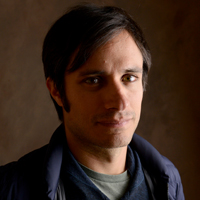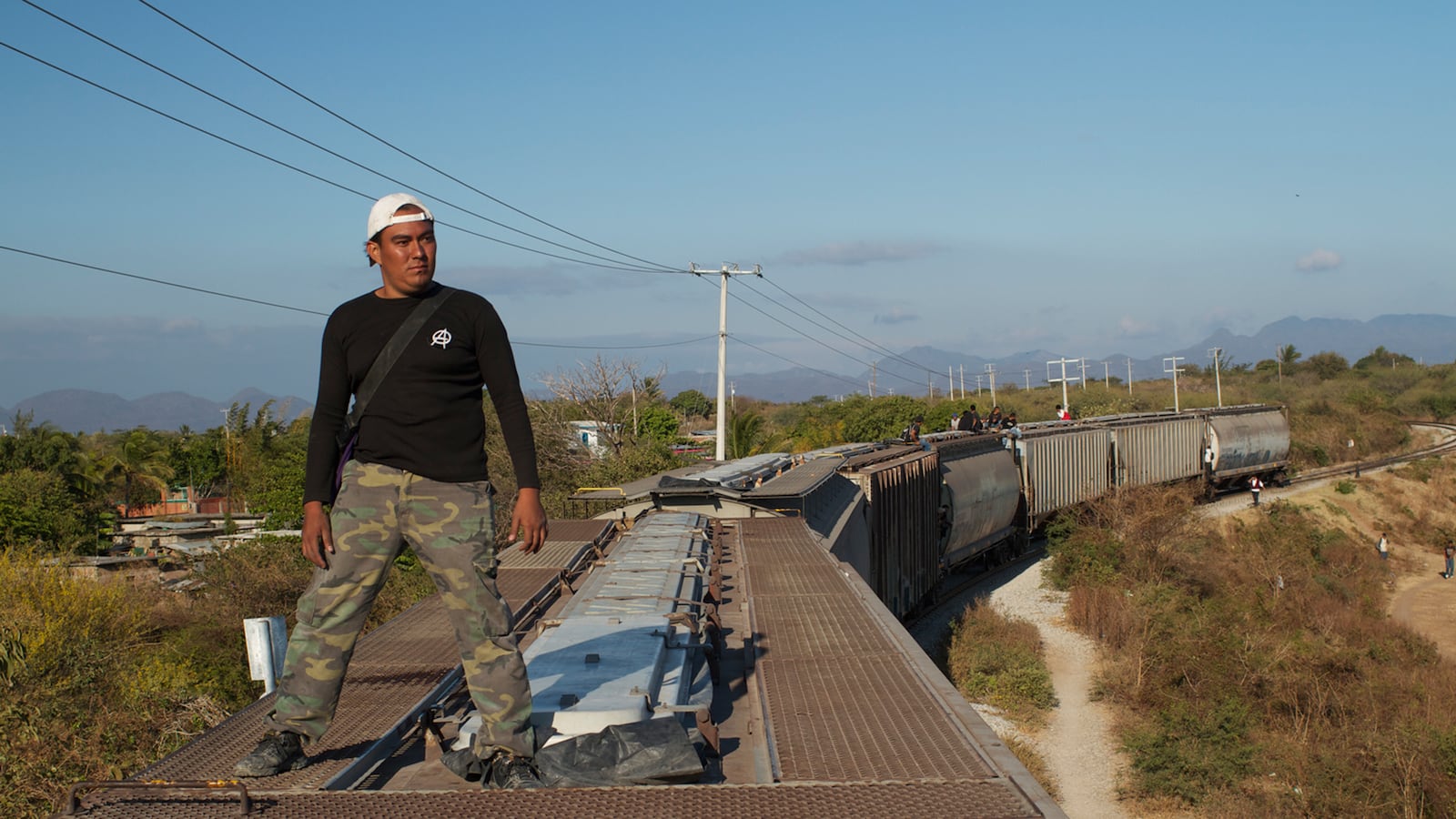In an early scene from Who Is Dayani Cristal?, I am sitting on a bus speaking with a man who is making his journey north to the border. He is older, a gardener by trade, and intends to cross into Texas. He is resigned to the fact that he may well get apprehended and deported, but he is also optimistic that whatever happens, he will make it to the “promised land.” He says that final part with a little irony.

This man is under no illusions about what he will go through to get there and what his life will be like on the other side. Yet his knowledge that this is the path toward a better life for himself and those he loves is the force that drives him. During this scene, you hear me say in the voice-over a line that came to me that day: “This is the oldest story, the very first book. The one that begins with an adventure. In it, we all play the main characters. We carry our hopes and virtues as our baggage ... while never forgetting what we left behind. Always longing for the place we came from.” This was the story I wanted to tell.
Right now across the Americas and around the world, we are discussing the issues of immigration and migration. We have come to view these issues as simply policy discussions, debates, and problems of globalization. But the urge to move, tied to the desire to survive, to prosper, and to seek a better future, has always existed. It is rooted in what makes us human. It is “the oldest story.”
So I wanted to make a film using personal stories about human needs and wants. Policymakers on either side of the border talk about immigration in terms of economics and politics without recalling or “seeing” the individual people represented by those statistics who pay the costs of those policies and who are too often silenced by rhetoric.
When I met director Marc Silver and producers Thomas Benski and Lucas Ochoa four years ago, we didn’t have a clear idea for the film, but we did share a sense of purpose, a curiosity about the world, and a desire to engage with this issue in a way that would make an impact. The problem we faced was indifference: how could we tell a story that people could hear in an environment where positions are so entrenched?
We researched, discussed, and brainstormed. The story that activated our imaginations and, perhaps strangely, gave us hope was that of the deaths of migrants in the Sonoran Desert in Arizona. Here were people with individual identities, aspirations, and families who had been making this journey and who were now dead and anonymous, fated to be a statistic, and who might well end up buried unidentified in a grave far from home. Someone somewhere would wonder perhaps for the rest of their life what had happened to the person they loved who migrated north.
And yet there was a remarkable group of people, a small team at the local medical examiner’s office in Tucson, who would do everything in their power to identify these people and return them to their families, wherever they may be. To me, this was both a perfect articulation of the problem and the suggestion of a solution.
In the current discourse, these men and women have been reduced to the level of an abstraction—they are “illegals,” or “aliens.” These are the people Eduardo Galeano describes in his poem “Los Nadies,” who “do not have names, but numbers.” If they make it through the desert with their lives, they become exploitable bodies, still anonymous, still rendered invisible. But none of these people in life lacked dreams, goals, or voices of their own. We need to listen to those voices.
The work taking place at the Pima County Medical Examiner’s Office can serve as an alternative model for us in how to engage with this issue. The men and women who work tirelessly to identify the dead are, by their actions, saying: these people are human beings with particular names, personalities, and families. They know that each person is irreplaceable. Their work does not accept the primary label of “illegal” and instead prioritizes the status of “human being.” If we can all introduce some of that compassion, empathy, and wisdom into how we discuss these issues, we will be better able to resolve what is undoubtedly one of the most pressing issues of our age.
For all of these reasons, we chose in Who Is Dayani Cristal? to deal intimately with one of the stories of someone found in the desert. The film is made up of three strands: the search in Arizona for his identity, the family’s experience of his disappearance, and the journey I undertook in retracing his steps. At every stage we learn how he is connected to other lives and how, like all migrants, he is linked to the path he takes through economics, love, and history.
In the film you see me retrace his steps. If I am going to understand this man’s journey, I must ride the train. I must try to walk in his shoes. I must listen to those who really know what he went through and why he did it. I wanted both myself and the audience to go on that journey, to speak to those people, listen to their voices, and imagine the experience of this man who is no longer here to speak.
When we were shooting Who Is Dayani Cristal?, we were a small crew operating on a tiny budget and moving from place to place. Each day we would wake up and find people who were making that journey. We would explain our desire to tell this story, and we would ask for their help and guidance. They became collaborators in crafting our film.
That collaborative experience and the solidarity we found on the road is also part of what I hope people can take from this film. This film could not have been made without the help of migrants making a dangerous journey who took the time to work with us, to lend us their thoughts and ideas, and to be part of this collaboration. There are people I will never meet again who were incredibly generous with their time and supportive of what we were doing.
Right now in the United States, in the aftermath of the 2012 presidential election, immigration reform has moved to the top of the agenda. We want the migrants’ stories we have highlighted to have a role in that debate. We want this film to remind the world that migrants, today and in the past, travel in search of a better life for themselves and their loved ones. It is my sincere hope that while this discussion is taking place, we can both elevate the discourse and also become more humane in how we seek to resolve this. We have to remember the stories of those who are making these journeys. We have to understand their motivations and aspirations. And we have to remember that it is simply untenable to reduce these human lives to an abstraction.
I hope that Who Is Dayani Cristal? allows the audience the chance to leave the cinema sensitized and engaged. I want them to ask themselves how far they would go for their own family if they were in this situation. I want them to think about migrants with the knowledge that their journey did not just start easily on the other side of the wall, but started with leaving their loved ones, their land, their culture, all the while knowing that their success depended on surviving an incredibly dangerous journey. I want them to feel proud of the humanitarian work people in the United States are doing in helping to end the pain of strangers by repatriating their loved ones.
I can never know what Dilcy Yohan experienced and will never face the challenges he faced, but Marc Silver and I wanted to find a way of personifying someone who tragically could not be on the screen to speak for himself. I was just a mechanism, and this film is about doing justice to his story and his experience. It is a testament in honor of all the migrants of the world, especially Dilcy Yohan and his family.




